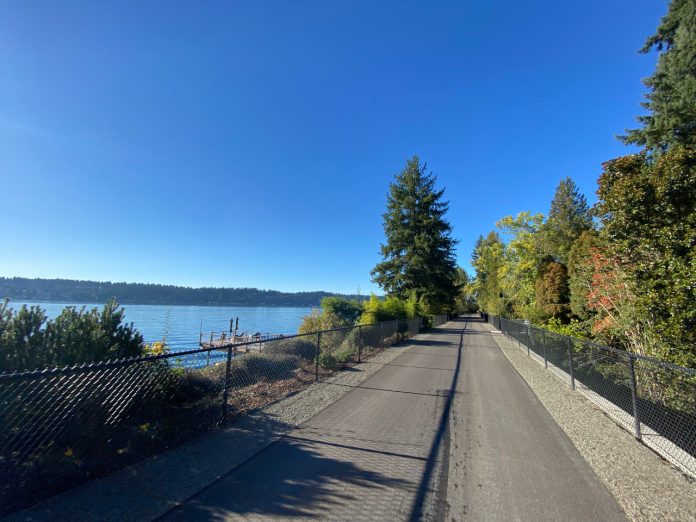
On Saturday, King County officials and Eastside leaders celebrated the completion of an 11-mile asphalt multiuse trail connecting Redmond with Issaquah, after construction wrapped up on the final segments of the East Lake Sammamish trail, a project county government started working on more than 25 years ago. Now that the full trail is open, trail users finally have a separated, off-street connection across more than 40 miles of trails, including the Issaquah-Preston trail, the Sammamish River trail, and the Burke-Gilman trail.
The first interim section of a trail along the east side of Lake Sammamish opened in 2006, after the County purchased the former rail line in 1998. But pushback from owners of properties along the proposed route resulted in years spent in court, with the end result a request for the U.S. Supreme Court to take up the issue of whether the county had the right to build the trail. The nation’s highest court declined, and the City of Sammamish finally issued a permit in 2019 allowing work to start.
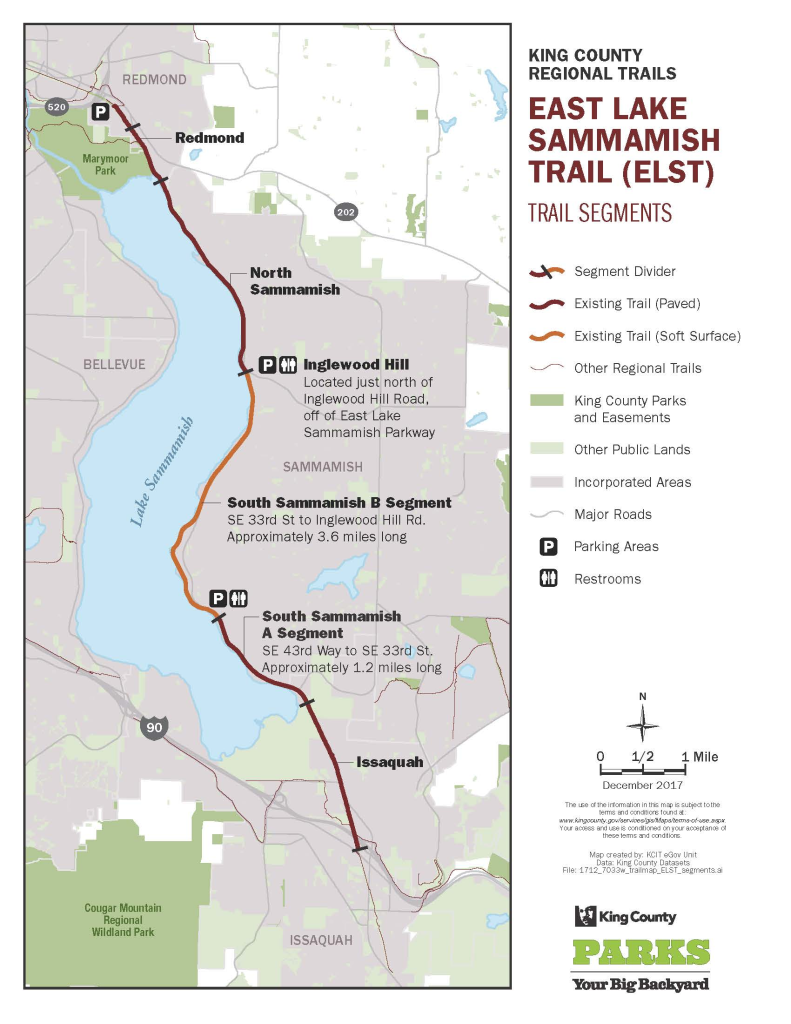
That long legal battle calls to mind a similar decades-long fight to complete the final gap of Seattle’s Burke-Gilman trail in Ballard, a battle that the city appears ready to concede to industrial property owners. Along Lake Sammamish, however, there was a happy ending.
“This is a really big deal, you all,” King County Councilmember Claudia Balducci told the gathered crowd. “This trail has been actively in the making for 26 years…this is a testament to perseverance, to teamwork, to partnership, to never giving up on a dream. And here we are today finally at the finish line able to enjoy it so it couldn’t be better.”
Balducci attributed completion of the final trail to several key figures in the history of county government, including former County Councilmember Jane Hague, and former County Executive Ron Sims.
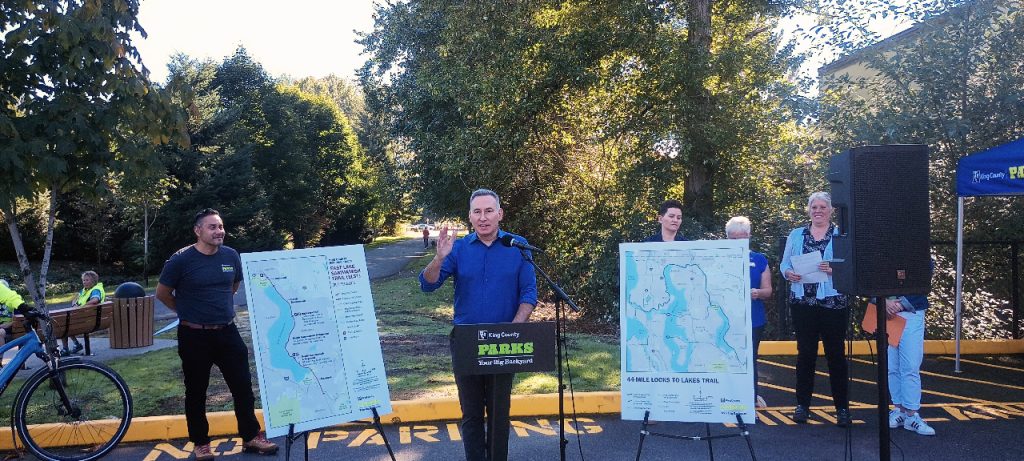
In 2000, the Sims administration made the call that the county would not pursue an alternate routing that would put the East Lake Sammamish Trail on streets away from the lakefront, appeasing waterfront homeowners. At the time, elected officials inside Sammamish city government were unhappy with that decision, deferential toward property owners, with the county council divided on the issue. “It’s nothing less than a marvelous opportunity,” Sims told the Seattle Times in 2003. “I’m not backing off this.”
“Decades of planning, decades of investments, decades of construction are aligning to produce tangible results for the people of King County with paved trails connected to high capacity transit,” County Executive Dow Constantine told onlookers gathered to watch the ribbon on the completed trail get severed. “There are an awful lot of elected officials who worked over the course of generations to make this happen.”
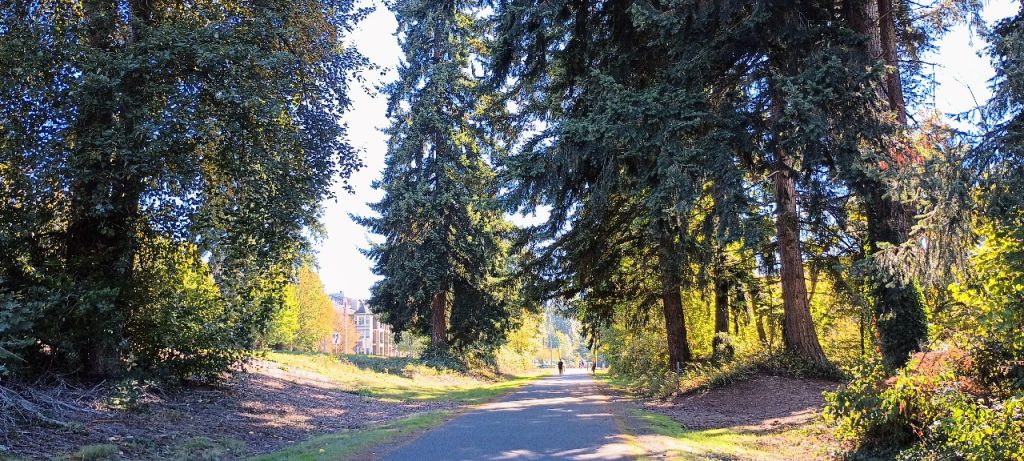
The trail’s completion puts Redmond, and its forthcoming light rail stations, at the center of a hub of existing and planned regional trails, including the Sammamish River trail and the 520 trail. Redmond’s Central Connector trail, which runs directly through downtown, will ultimately connect to the 42-mile Eastrail corridor that’s under construction in several places right now. Earlier this summer, work started in Woodinville to create the final section needed to connect these trails with planned trail network segments in Snohomish County.
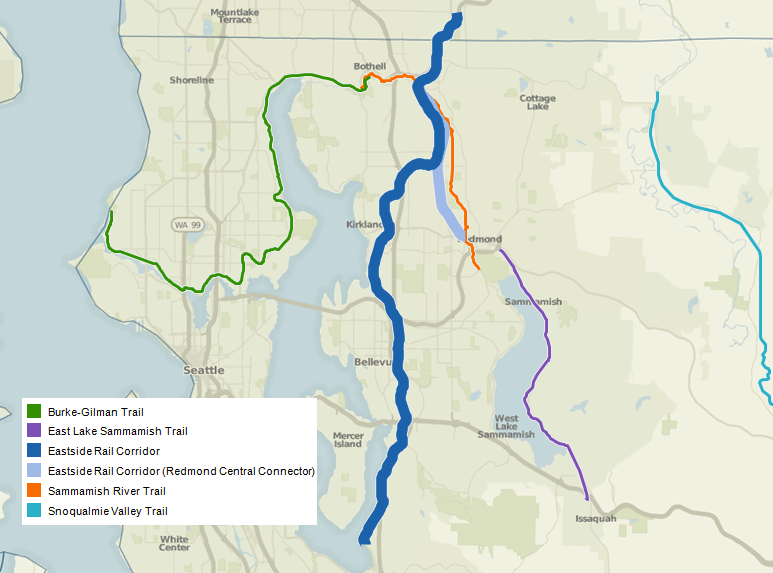
“This is a key component in reducing the need to drive. It’s going to be connected to light rail, literally a block away from here,” Redmond Mayor Angela Birney said. “It also serves as a gateway to access local businesses…and connects our neighborhoods. It also symbolizes our commitment to building a better, more connected, and more sustainable future for ourselves and the future residents and communities that will come to this area.”
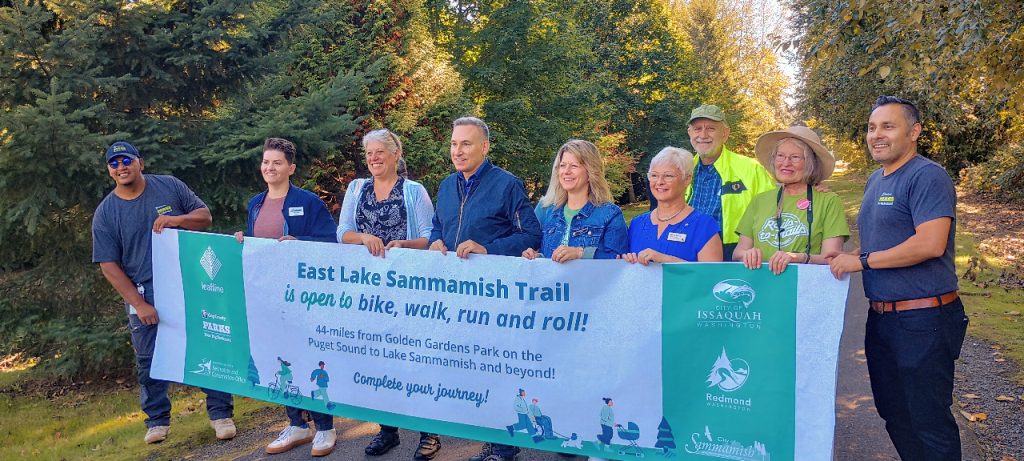
“A fully connected East Lake Sammamish Trail will play a key role in providing access to the Marymoor Village Station when it opens in 2025,” Kelli Refer, executive director of Move Redmond, told The Urbanist. “The Eastside is really highlighting the potential of trails as a way to access transit. Between the East Lake Sammamish connection, the Redmond Central Connector and the Eastrail people will have great bike access to the East Link Light Rail. This trail is a safe, all-ages facility connecting the communities of Redmond, Sammamish and Issaquah for all kinds of trips.”
Before long, the completed East Lake Sammamish trail will likely blend into the background of the region’s transportation network, well-loved by the people who come to depend on it. But the collective vision put forward by leaders, most of whom are long since out of elective office, will pay dividends for years to come.
Ryan Packer has been writing for The Urbanist since 2015, and currently reports full-time as Contributing Editor. Their beats are transportation, land use, public space, traffic safety, and obscure community meetings. Packer has also reported for other regional outlets including BikePortland, Seattle Met, and PubliCola. They live in the Capitol Hill neighborhood of Seattle.

